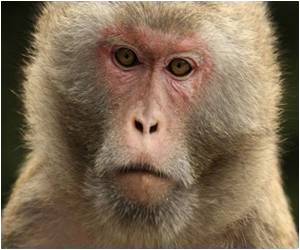In a new research, a team of scientists has suggested that humans most likely share a common ancestor with orangutans, not chimpanzees and gorillas.
In a new research, a team of scientists has suggested that humans most likely share a common ancestor with orangutans, not chimpanzees and gorillas.
The research, done by scientists from the University of Pittsburgh and the Buffalo Museum of Science, reject as "problematic" the popular suggestion, based on DNA analysis, that humans are most closely related to chimpanzees, which they maintain is not supported by fossil evidence.Jeffrey H. Schwartz, professor of anthropology in Pitt's School of Arts and Sciences, and John Grehan, director of science at the Buffalo Museum, conducted a detailed analysis of the physical features of living and fossil apes that suggested humans, orangutans, and early apes belong to a group separate from chimpanzees and gorillas.
They then constructed a scenario for how the human-orangutan common ancestor migrated between Southeast Asia, where modern orangutans are from, and other parts of the world and evolved into now-extinct apes and early humans.
The study provides further evidence of the human-orangutan connection that Schwartz first proposed in his book "The Red Ape: Orangutans and Human Origins, Revised and Updated".
Schwartz and Grehan scrutinized the hundreds of physical characteristics often cited as evidence of evolutionary relationships among humans and other great apes like chimps, gorillas, and orangutans, and selected 63 that could be verified as unique within this group (that is, they do not appear in other primates).
Of these features, the analysis found that humans shared 28 unique physical characteristics with orangutans, compared to only two features with chimpanzees, seven with gorillas, and seven with all three apes (chimpanzees, gorillas, and orangutans).
Advertisement
They found that orangutans shared eight features with early humans and Australopithecus and seven with Australopithecus alone.
Advertisement
Schwartz and Grehan pooled humans, orangutans, and the fossil apes into a new group called "dental hominoids," named for their similarly thick-enameled teeth.
They labeled chimpanzees and gorillas as African apes and determined that although they are a sister group of dental hominoids, "the African apes are not only less closely related to humans than are orangutans, but also less closely related to humans than are many" fossil apes.
Source-ANI
SRM









